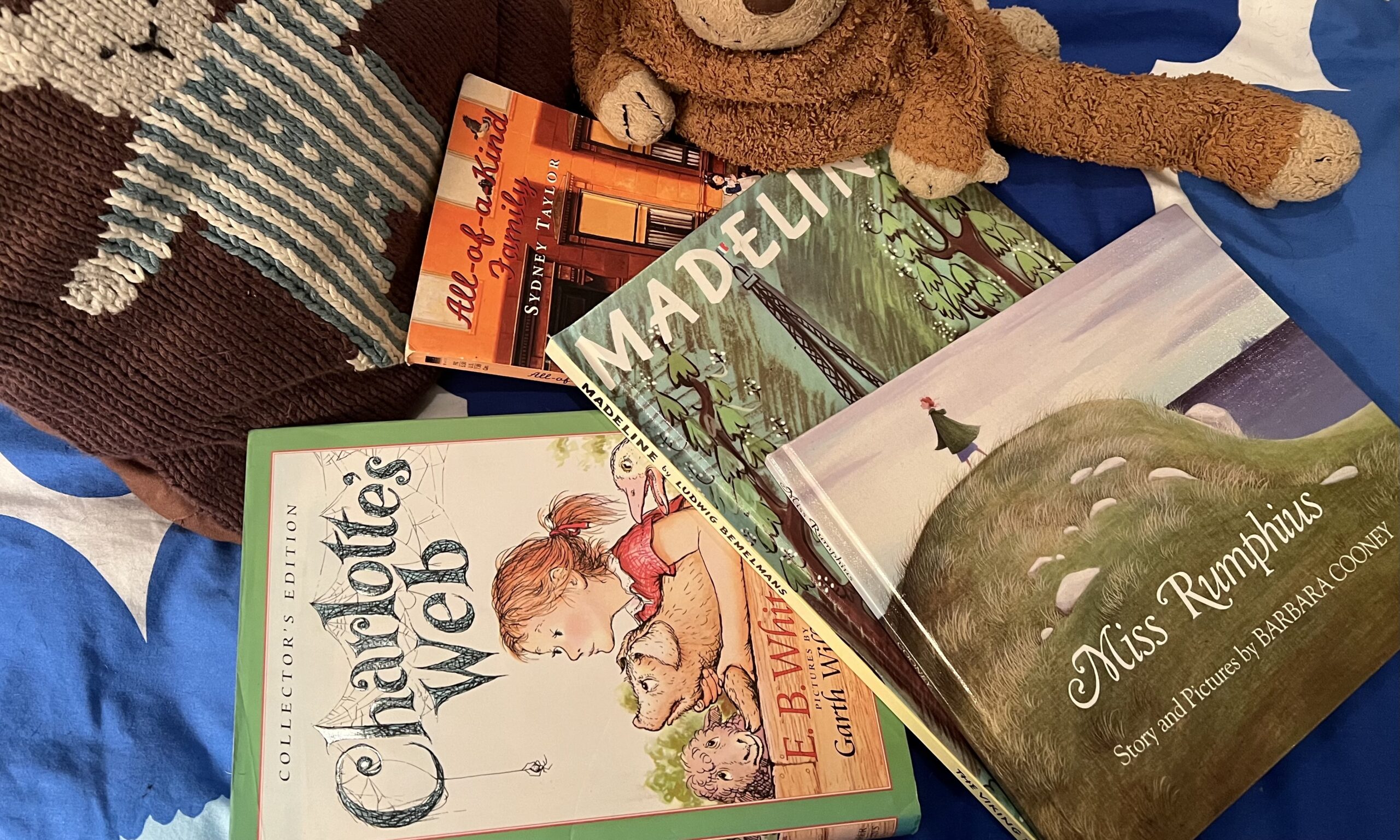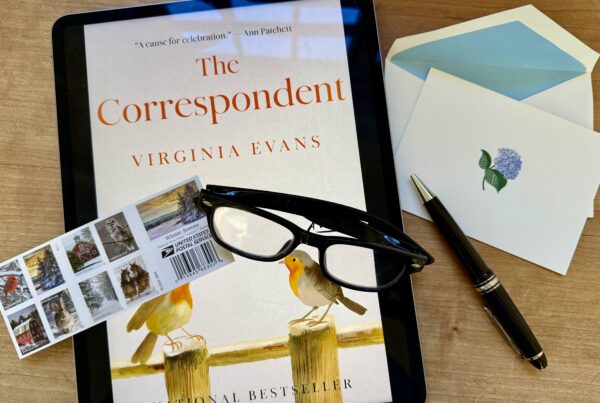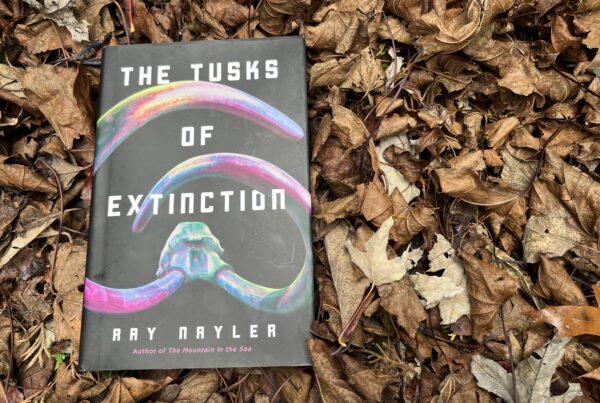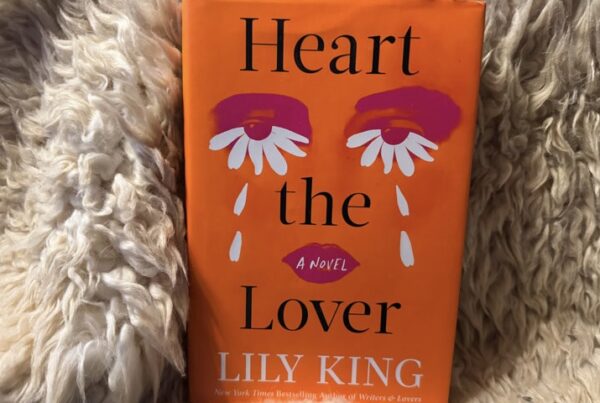As the headmistress of a historically all-girls’ school, I gather the whole school together several times for assemblies to mark the rhythm of the year: Convocation, Thanksgiving, the Snowflake Assembly preceding winter break, and our flower exchange in May that marks the official beginning of the end for our seniors. Frequently, groups perform music or play instruments. The tiniest children often do a seasonal turkey dance. Little children sometimes sit in the laps of older siblings or parents on the faculty. And I always read a picture book. In the early years of my headship, I think some august faculty looked askance at my choice, but in recent years, even the oldest upper school students request a story. Once I read poetry instead of a picture book, and everyone was mad.
What is it about picture books? Their size? Their marvelous illustrations? The combination of text and pictures? Whatever it is, I adore them. And, these days, I have been thinking about just how much I love the stories I used to read to my own children and the stories I choose to read at our assemblies–A Practical Present for Philippa Pheasant by Briony May Smith was a hit last Thanksgiving. Children’s books have proliferated since I was a girl when Beverly Cleary, Frances Hodgson Burnett, Laura Ingalls Wilder, and E.B. White were the big names–I love those stories, too.
The world feels upside down. Daylight savings–or rather, the falling back to non-daylight savings–coupled with my anxiety over the election and my sorrow that girls in the school I lead once again see a man elected to office rather than a woman make me lose sleep these days. Add to that the fact that we are in the midst of moving out of our home as I prepare for retirement and we imagine a new chapter back east–exciting but also stressful. I haven’t been able to read deeply or with sustained attention.
In the meantime, when I wake in the night, I tend to prowl the house at 3:00 a.m. looking at our bookshelves. I’ve been packing box after box of books–yes, I have given away lots of titles, but there are still far too many volumes, and it is the children’s books I find hardest to part with–children’s books, you see, go out of print fast. It’s hard to get ahold of books by Judith Casely, an author and illustrator I adore. Though I’ve already sent many favorite books to our new house in Pennsylvania, I find myself opening volumes I know well, seeking reassurance, seeking solace.
When our daughters were young, we were determined to curate a collection of books that showed girls being bold and imaginative and gutsy and fabulous. We did not want a diet of books about how girls suffered but persevered, though, to be sure, that is a theme too often at play in even some of our much-loved stories.
More than thirty years ago, as new parents, we were troubled by how many books for kids still featured boys–white boys at that–within their covers. So we were deliberate about the books we acquired–and there were always books given for birthdays and Hanukkah and Christmas and just because. Brave Irene, Miss Rumphius, Tar Beach, The Library, and The Gardener joined classics that my mother had saved from my own childhood: Charlotte’s Web, Madeline, The Secret Garden, A Little Princess, all the Anne of Green Gables books, Little Women, the All of a Kind Family series. Our daughters, snuggled next to me on the couch on a weekend morning, chose the same titles over and over again: The Librarian, Nora’s Stars, Chrysanthemum. We read and read. My husband read aloud the entire Junie B. Jones series, our girls chortling at Junie B.’s terrible grammar and outrageousness. I wanted them to see themselves–brave, daring, undaunted, feisty, smart, creative, full of dreams and possibility. I wanted them to identify with William Steig’s Irene, determined to get the dress her mother had made to the lady who had ordered it despite a blizzard. I wanted the girls to understand that when hard things happen we can persevere as do the mother and daughter in Vera Williams’ classic, A Chair for My Mother. In that story, the mother and the daughter are rooted in their family and neighborhood community–they are not alone. Alice’s grandfather in Barbara Cooney’s Miss Rumphius challenges her to do three things: travel to far away places, live by the sea, and make the world more beautiful–which she does, sowing lupine seeds all over the little village near the sea where she lives after a lifetime of adventure.
“You can do those things, too, girls,” I murmured, stroking my daughters’ silky heads, trying to imagine all they would do in their lives.
Amazing Grace taught our two that girls–and then our son–could be anything; why couldn’t Grace, a Black girl, be Peter Pan in the class play? Of course she could. In Emily Arnold McCully’s classic, Mirette on the High Wire, Mirette helps the Great Bellini conquer his stage fright by reassuring him and helping him rediscover his confidence. In Elizabeth Winthrop’s series illustrated by Patience Brewster, Nora is Bear’s wise caretaker, though she, herself, is still a little girl.
On the floor, in the middle of the night, tucking books into boxes, I remember those hours on the couch, my children’s futures shimmering out in front of us. Grace will dazzle as Peter Pan, Charlotte will be Wilbur’s best friend, Mary and Dickon will always bring the secret garden back to life and Colin will walk again, Sara Crewe will prevail over cruel Miss Minchin, Madeline will be unintimidated by the tiger at the zoo, and Irene will deliver the dress and be invited to the ball. We have to be careful about resilience being linked to suffering; we have to resist teaching our daughters that bouncing back is always what’s required. Some days, we have to hunker down, snuggle with a child or a pet, allow ourselves to have all of our feelings, and, when we are ready, allow hope to glimmer again.
The girls in my school and my own daughters amaze me; they are so capable, so committed to changing our complicated world for the better. I am buoyed by their abilities, their determination, their persistence, their resolve. They and those children’s books I love so much offer hope and inspiration; these days, they are fireflies, illuminating the dark unsteady night.




